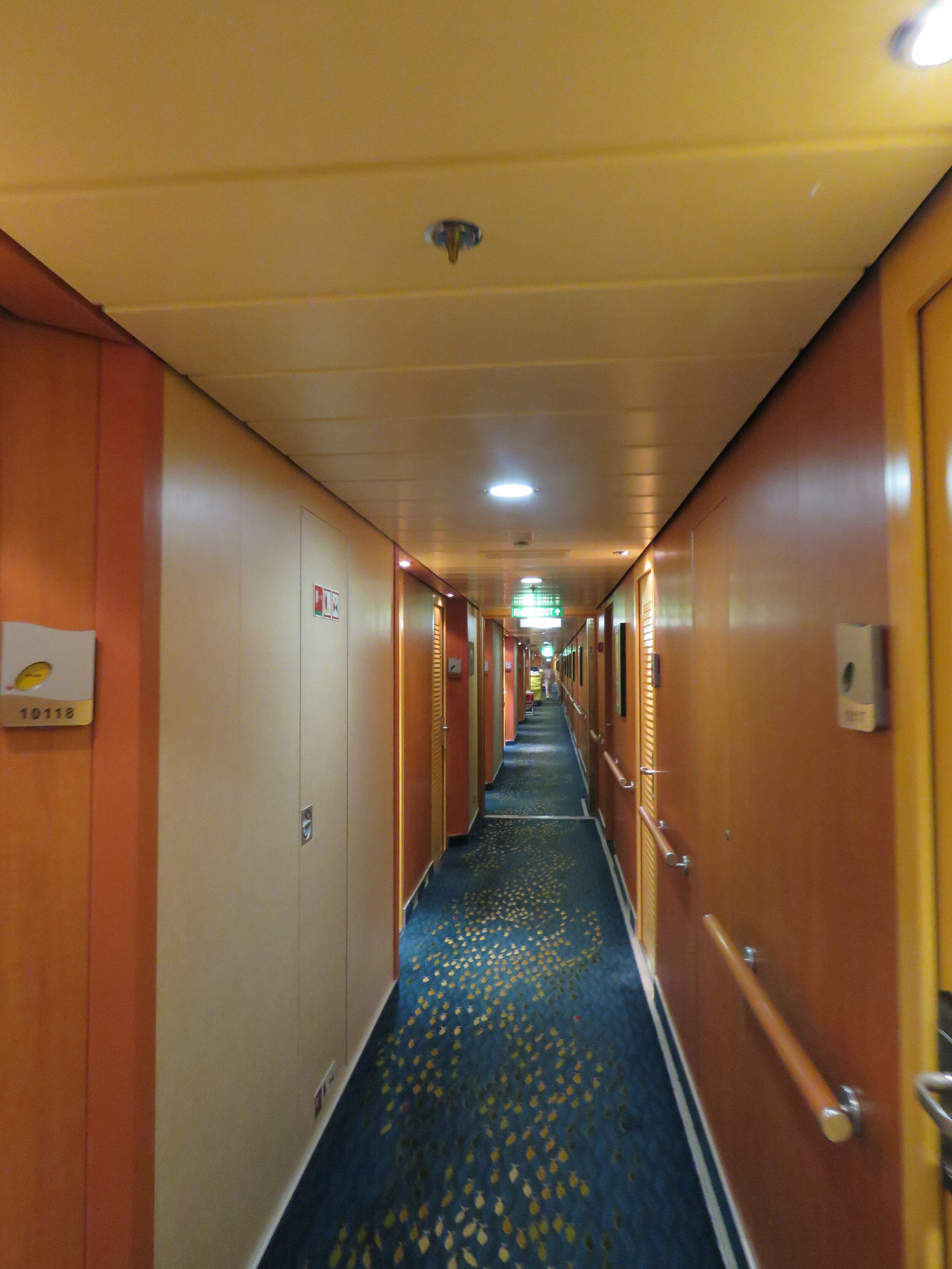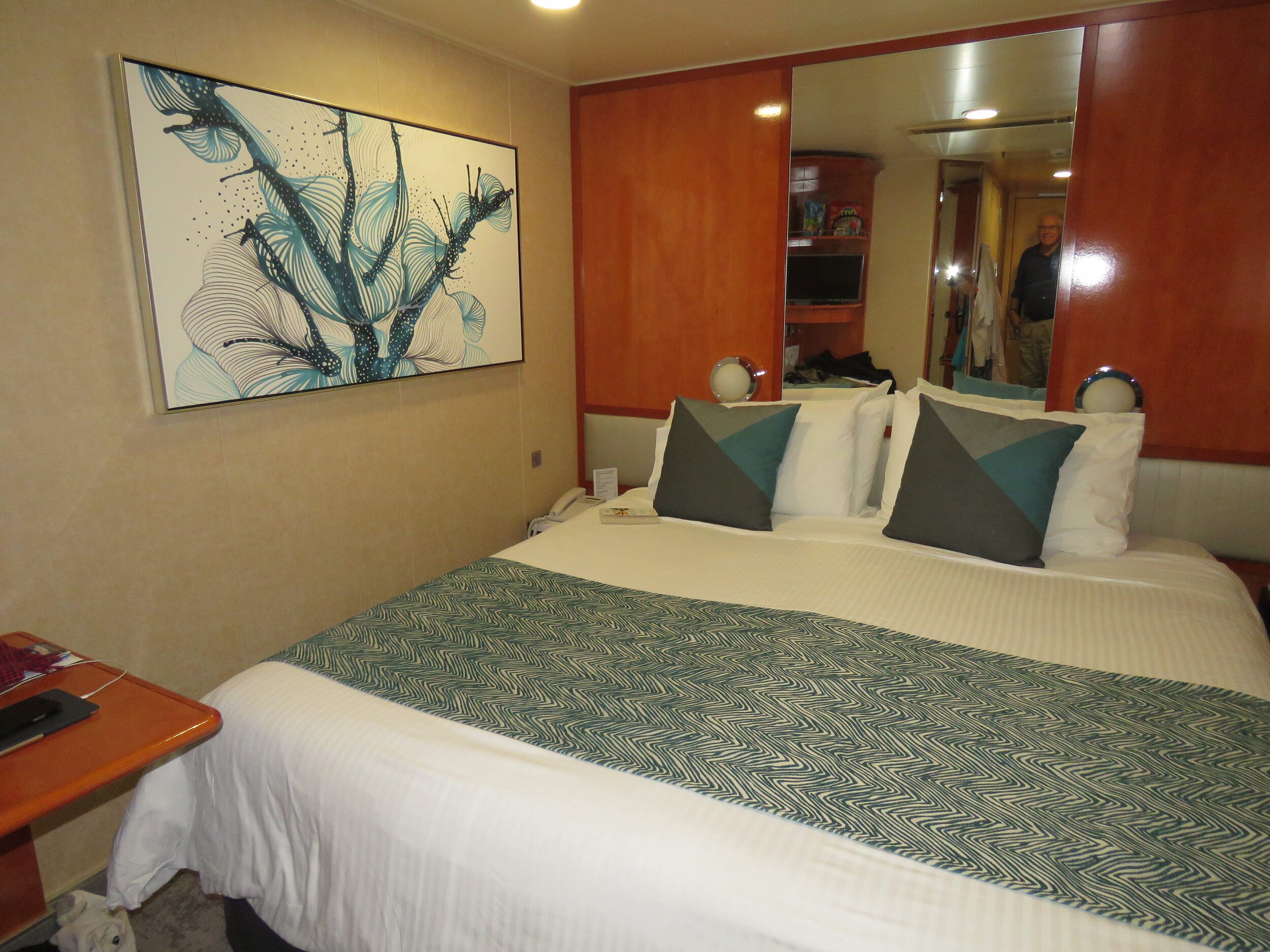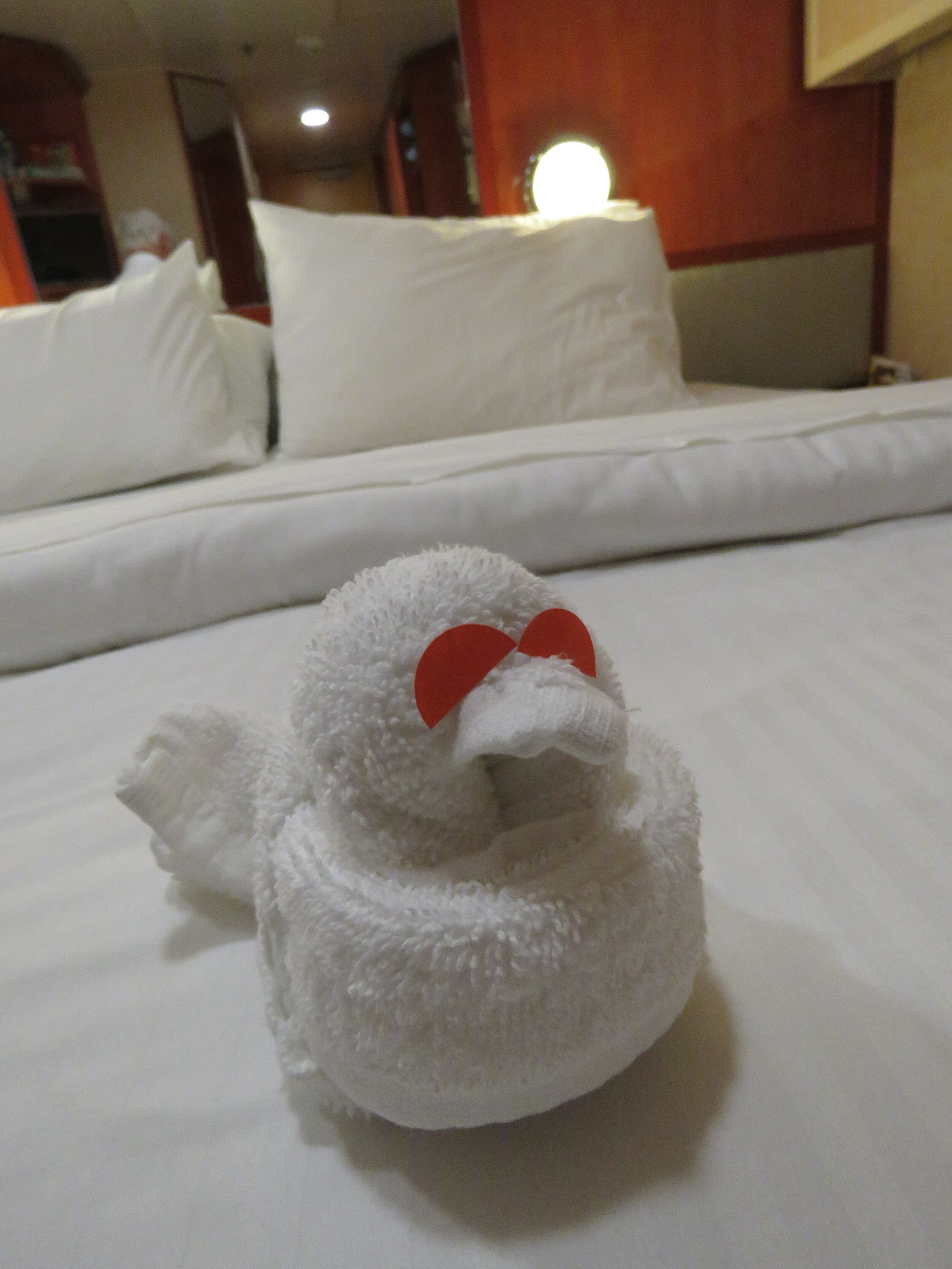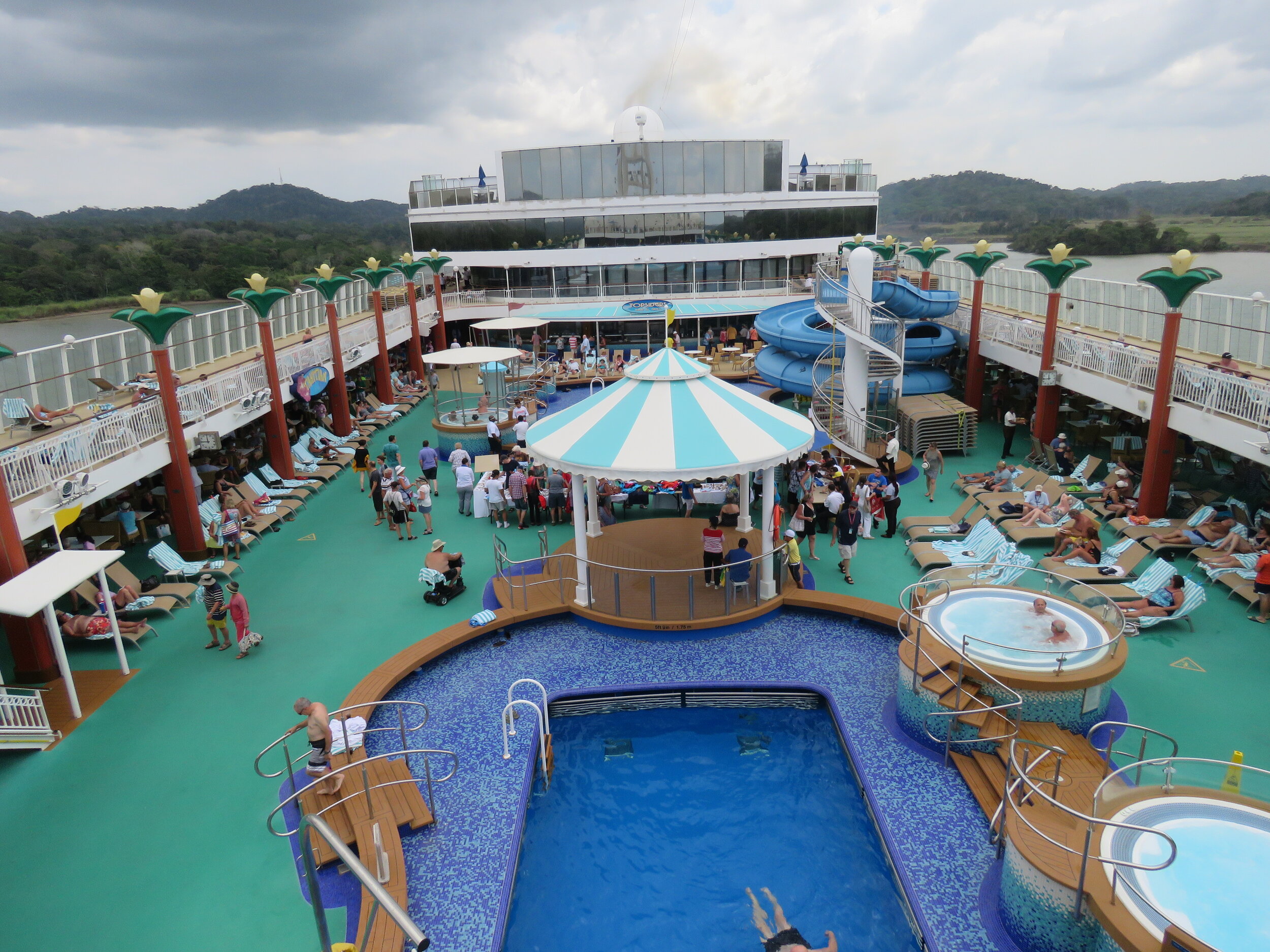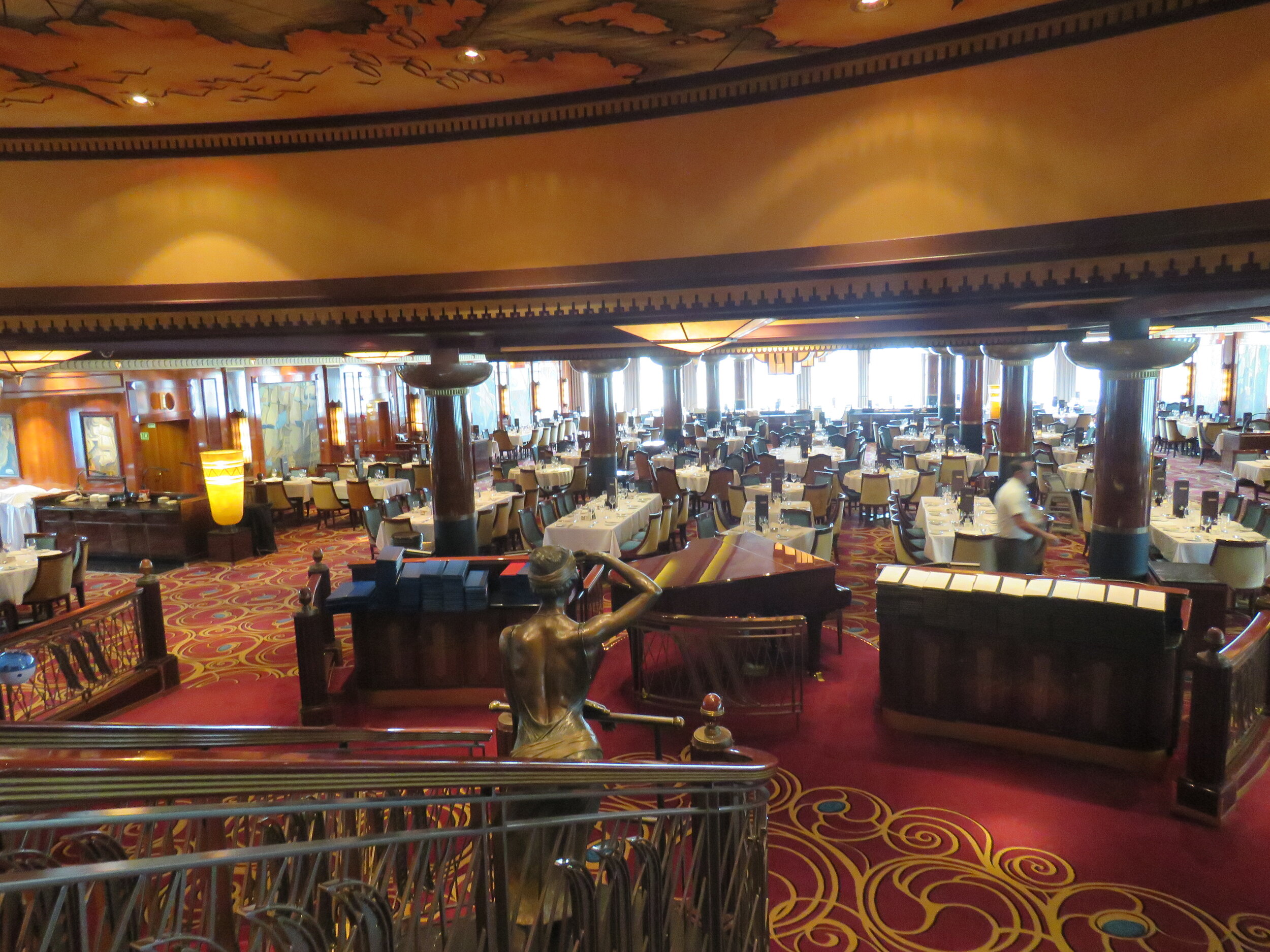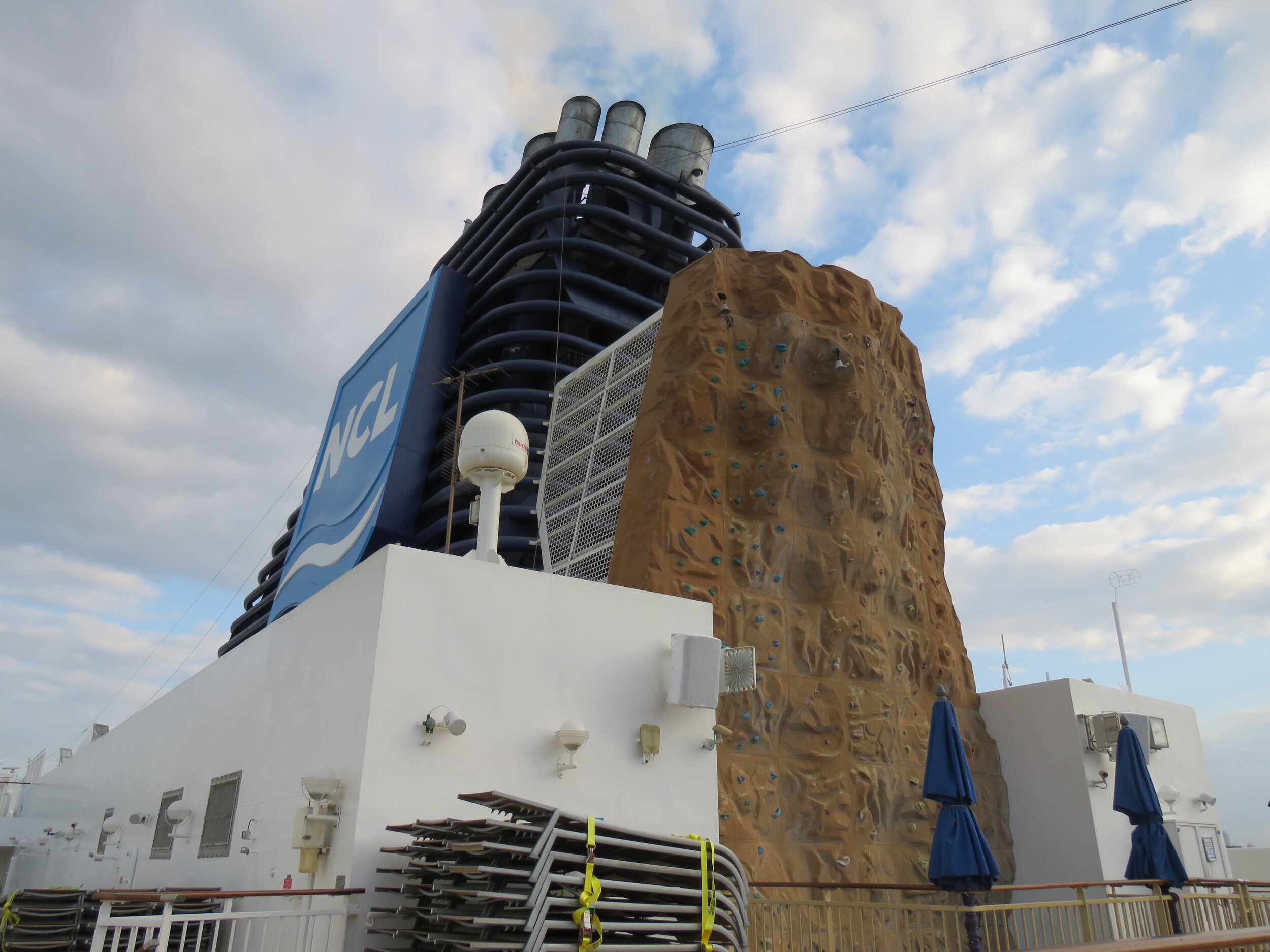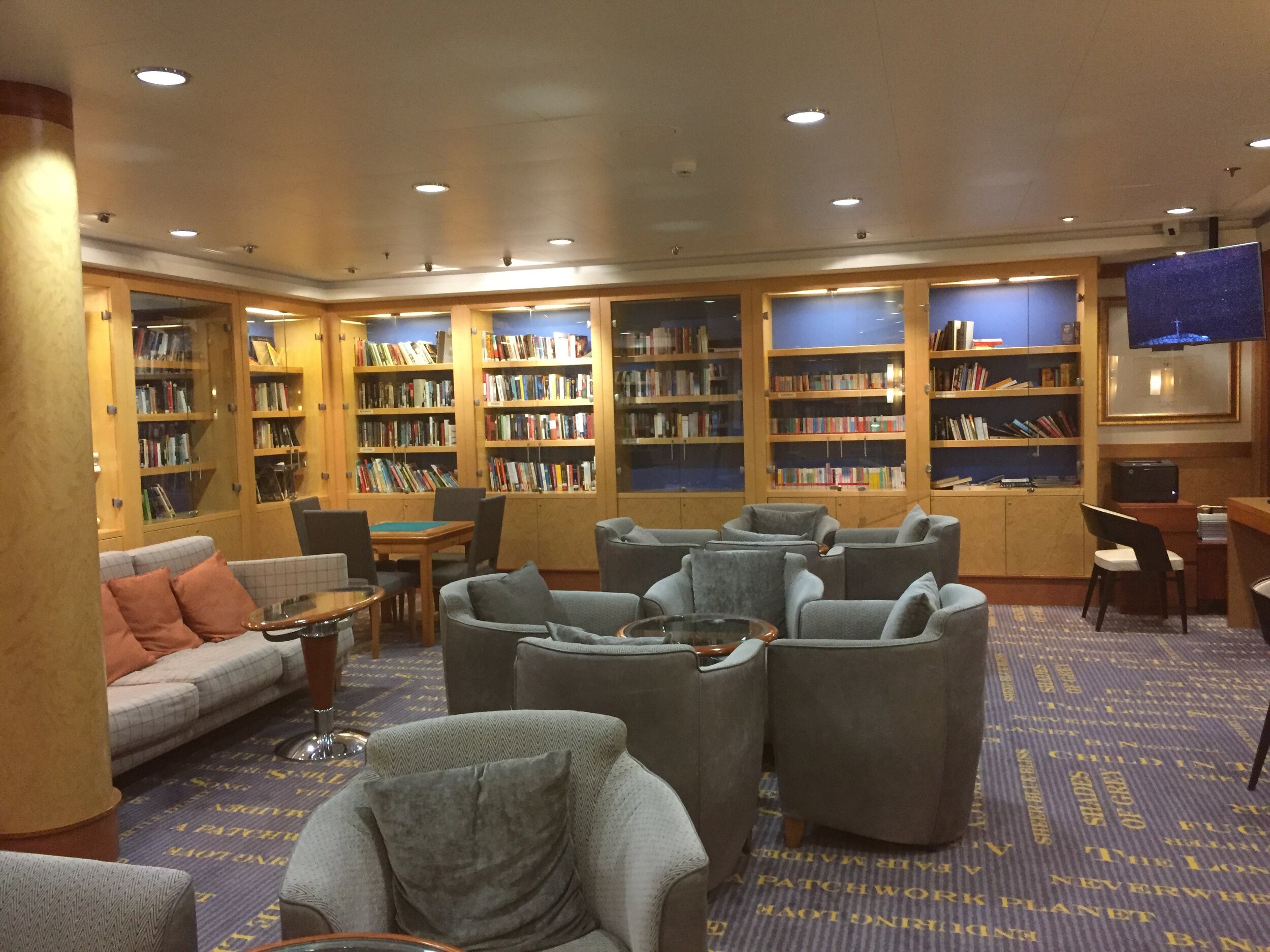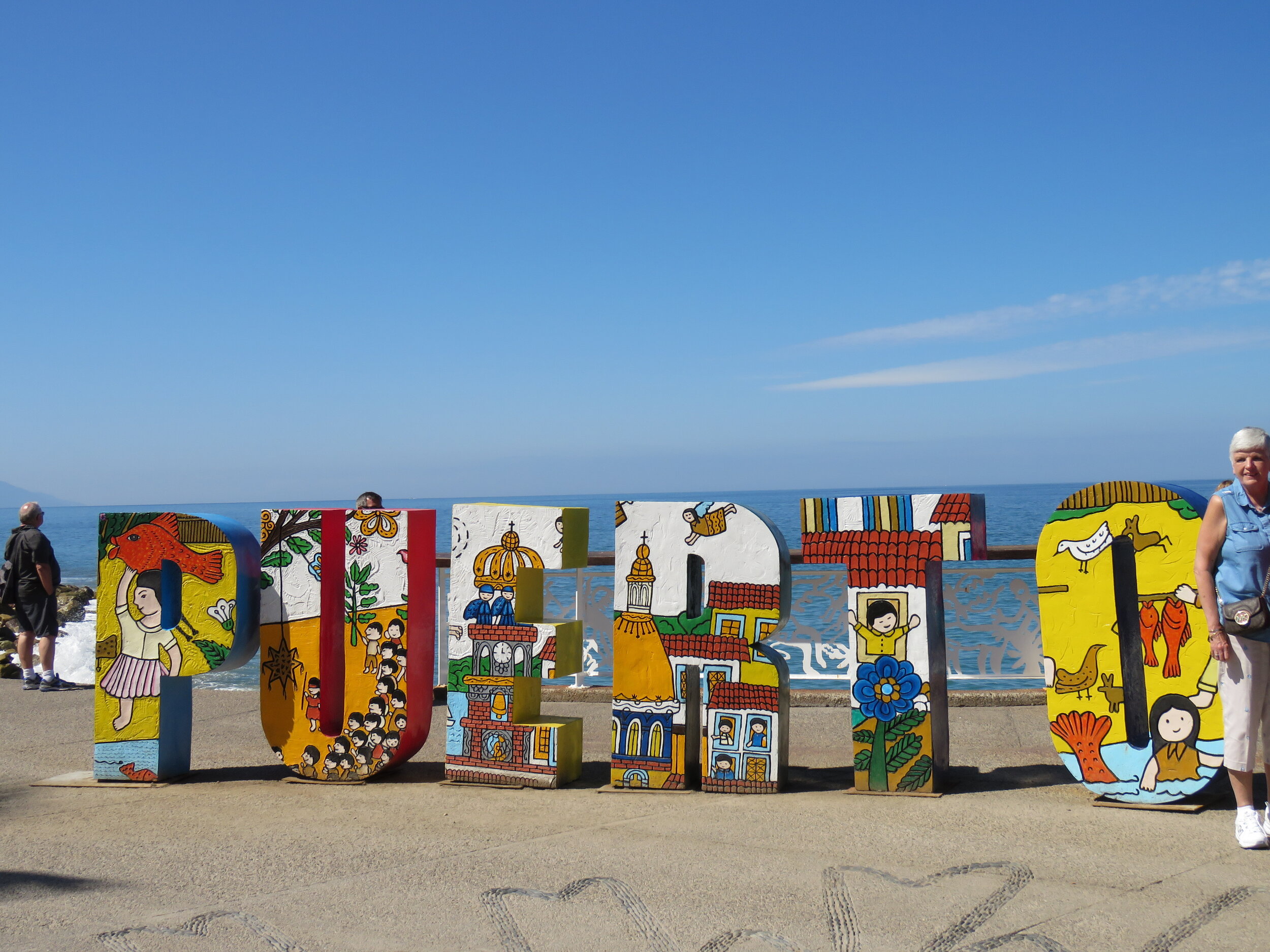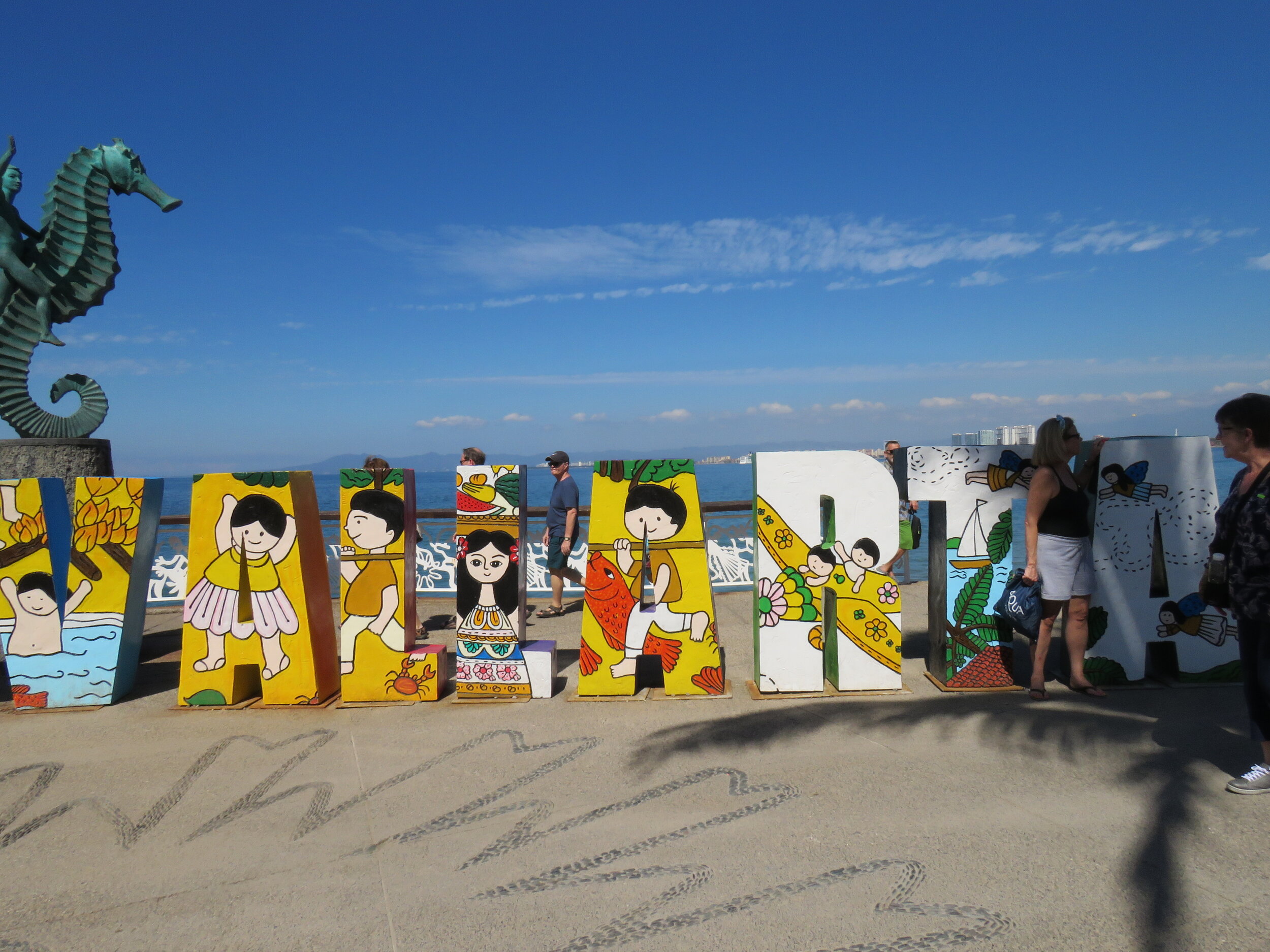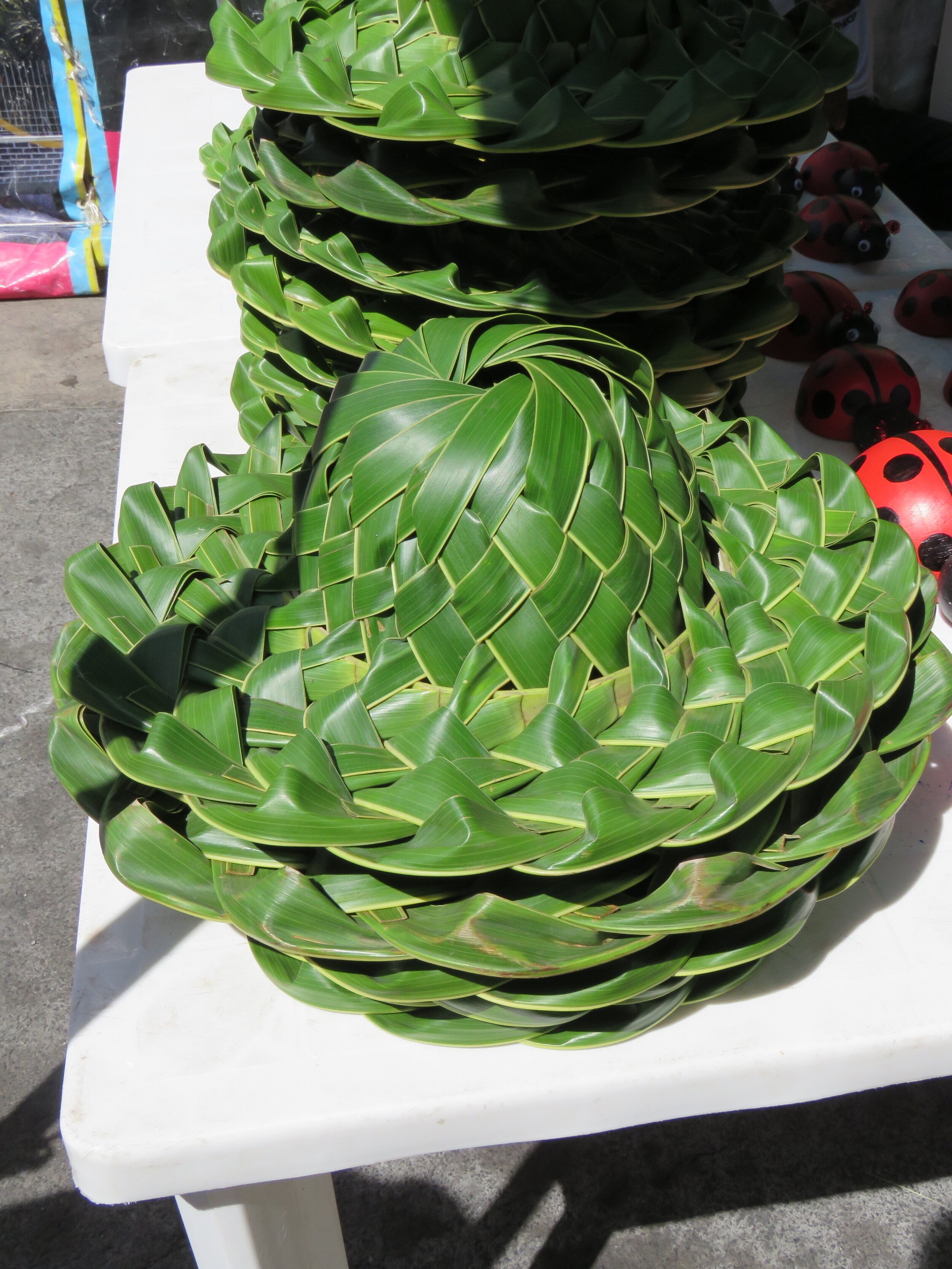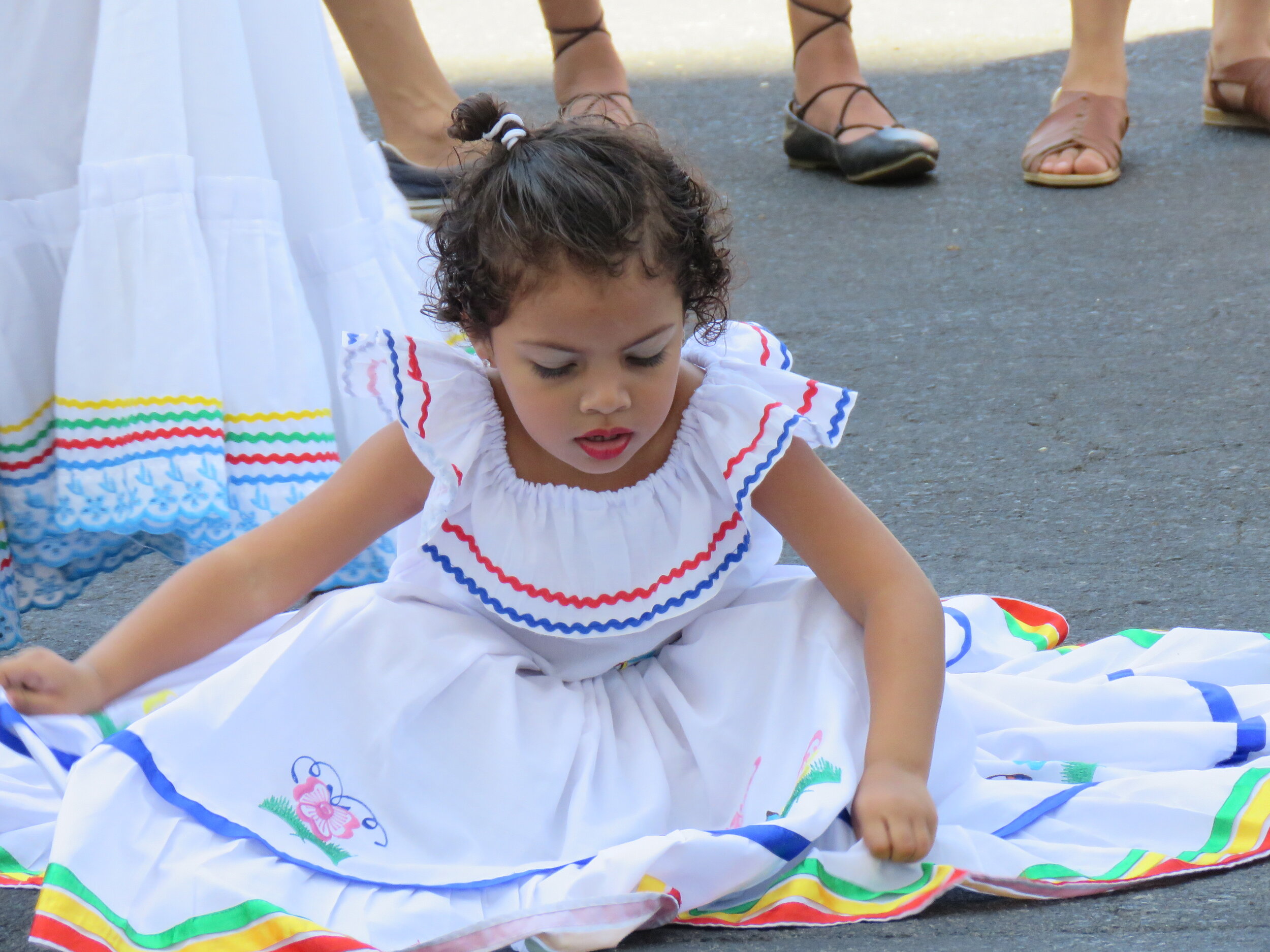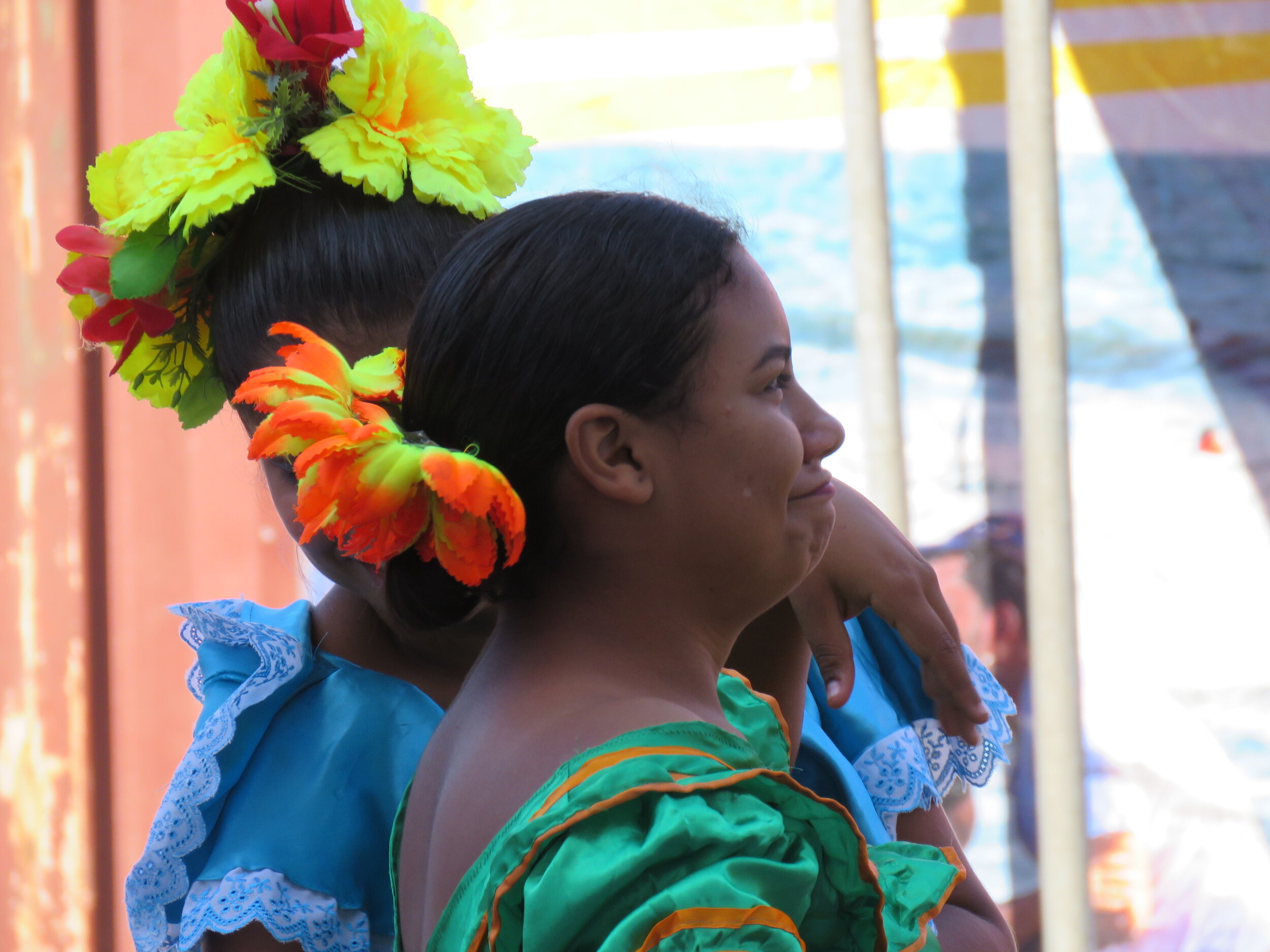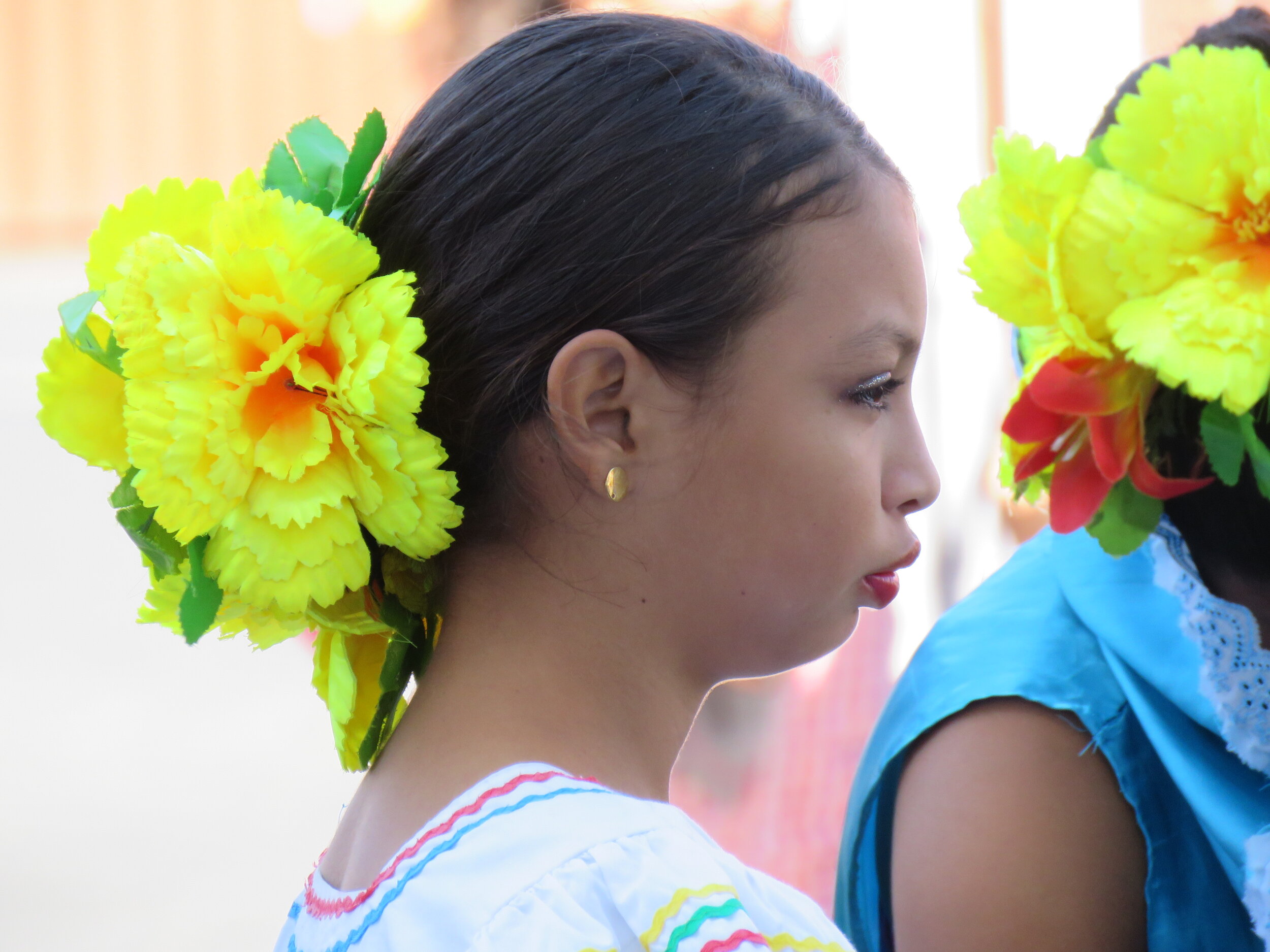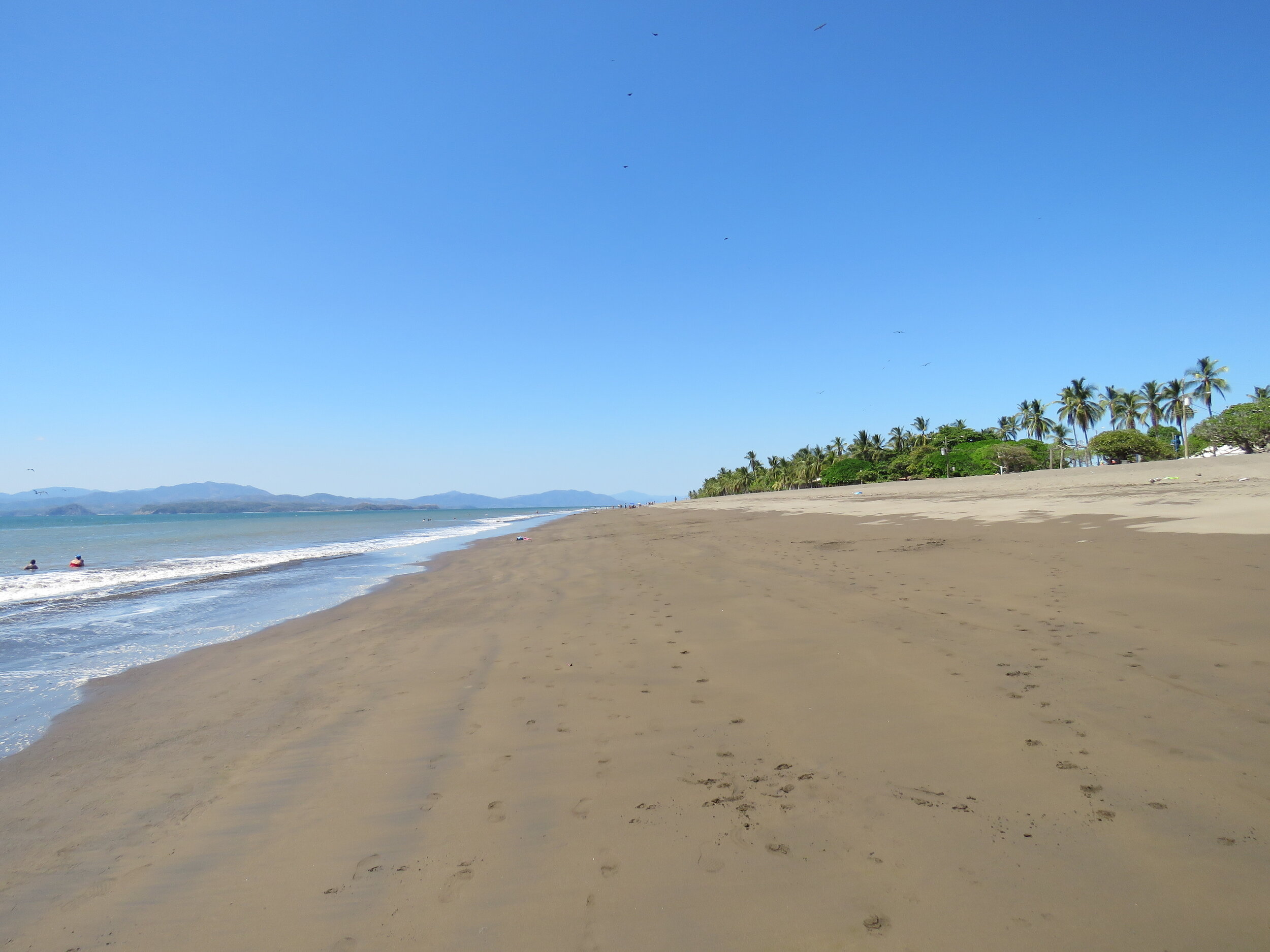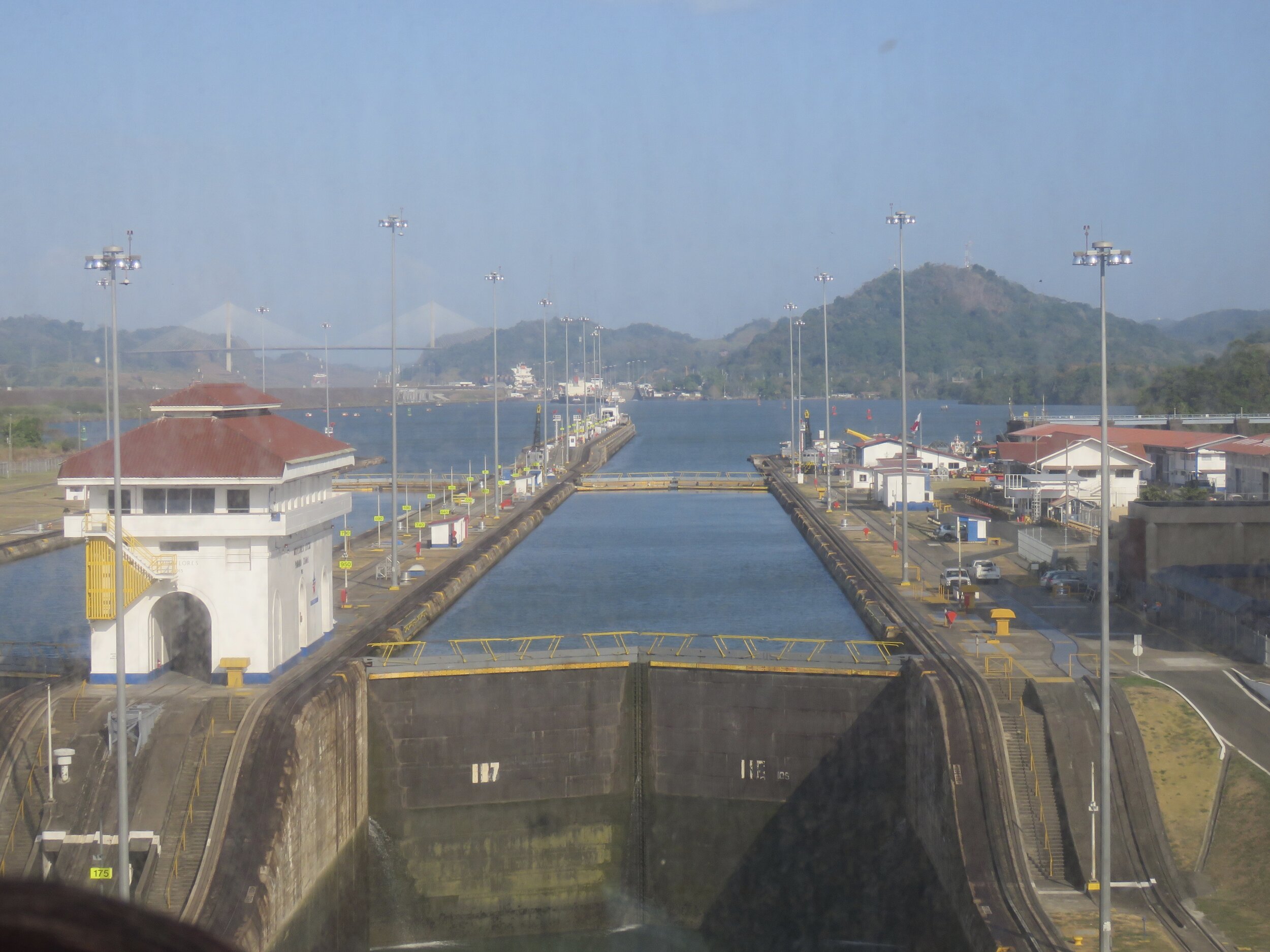Winter on Salt Spring is, usually – knock on wood – incredibly mild. That’s why we live here. No snow, just rain. And more rain. But you don’t need to shovel rain.
Sometimes, the pipes freeze. Sometimes we do get a dump of snow, even if the cherry blossoms are already out. We knew we didn’t want to spend the entire winter at home and were dreaming of going some place warm and sunny by January. We researched possibilities and came across a trip that really appealed: a 3 week cruise through the Panama Canal. The question is: can we handle being on a cruise ship for three weeks?!
Cabo San Lucas
We whale watched from the ship.
As a good Dutchman, Kees has always been intrigued by that canal. And I like seeing new places better than places we’ve been before, no matter how much I loved it. This itinerary offered several new countries: 3 different places in Mexico, a stop in Guatemala and Nicaragua, then Costa Rica, on whose west coast where we haven’t been before. After going through the Panama Canal, we’ll stop in Columbia, Aruba, Bonaire and Curacao. Ending up in New York in mid February is not too exciting but everything before that sounds perfect. It is a so called ‘repositioning cruise’ – the ship is being switched from one location to another for the season. It will leave Los Angeles and end up in New York.
The ship has a library! No talking, just reading and floor to ceiling windows to see the ocean. Perfect.
Norwegian Cruise Lines is very well organized. Check in is a breeze. Time to walk on board and meet our home for the next 3 weeks. We have an inside room. No windows but a TV screen shows the view from the bow and stern. It also makes for great sleep in a quiet, dark room. We follow the fishes on the carpet to find our room back!
The first three ports are in Mexico. Onboard you can always book shore excursions for any port. We like to stay within a budget and explore on our own, so deciding where to make use of shore excursions is always a challenge. In Cabo San Lucas we stroll the boardwalk, eating a Mexican lunch at a little café with servezas a fraction of the cost of those on board, and take in the sun drenched scenery. A modern tourist information center has city maps and English speaking staff, even if I can now get around with a little bit of Spanish. Plenty of local taxis if we wanted transportation but we simply walk to the town center following the board walk, find free wifi at Starbucks and stroll back.
Having studied Google maps, we saw that in port #2, Puerto Vallarta, the old city center was a long ways away from the cruise dock. So we did book a tour here: one that took us to town by bus, then around the old city on foot, then by bus around the area and to a restaurant for lunch in the hills, and back to the ship. It was a wonderful introduction to Puerto Vallarta. We walked quite a bit, through narrow city streets, to the cathedral, across a market, and the water front. We noticed that the city was quite clean and well kept. Lunch was great with good views of the beach, the city and our ship in the distance. Lots of high rises, very busy and not necessarily a place I’d go back to but clean, with nice beaches and lots of resorts.
My favourite spot to read and have breakfast is on the back deck.
In Manzanillo, our last Mexican stop, we walk along the nice, wide boulevard to a wonderful coffeeshop with great, free wifi and enjoy good Mexican coffee while catching up on emails. Since we always send a postcard from every place we visit, to our grandsons, we ask in one little shop if we could buy stamps. A friendly young man dropped everything he was doing and walked us through a labyrinth of streets to the local post office. Would have never found it without his help! And it’s fun to wander back, look at the shops and get a feel for this town. It seems more authentic, more Mexican than the previous stops – a place I might just look at in more detail for a beach holiday.
We were curious to see both Guatemala and Nicaragua. The coast line is green, dotted with lots of volcano peaks. The offer of shore excursions in Guatemala was minimal and none appealed to us. They were expensive and most seemed to involve several hours on a bus. True, you get to see some of the country that way but we didn’t feel like spending our day on a bus going to a big city. We had planned to simply wander around the port area. However, once we docked we were told that no one was allowed to walk in the port area. What we could see, from the ship, was not attractive: a very industrial area with hot, dusty pavement, and lots of machinery. With many other passengers leaving for the day, we decided to not even disembark here. We spent a lovely day relaxing, swimming in the pool and reading our books. Too bad we can’t really add Guatemala to our country list, but Puerto Quertzal did not seem a very attractive place to be.
Our next destination was Corinto, Nicaragua. From the ship, we could see the small town and study the lay of the land. The town was at the end of a long, narrow strip of land jutting out into the Pacific from the mainland. We walked off the ship and right into town. Only to be accosted by a large flock of peddlers: t-shirts, gawdy souvenirs, lots of lots of tricycle drivers, and so forth. But we have learned to ignore, say ‘no, gracias’ and walk straight through. Church bells chimed as we strolled through town on a Sunday morning.
We followed streets around the shore, took some back alleys and watched kids play the national sport: trompo, an amazing spin top game. The string gets wound flat and tight around the large wooden top. Then, with one loop around a finger, the player throws the top to the ground where it should spin for a long time. It’s fun to watch: https://www.youtube.com/watch?v=WR_hCMR2Xvc
Beach in Costa Rica.
It’s a treat to stay in one room, leave your stuff unpacked and wake up in a new place without having to drive. In Puntarenas, Costa Rica our ship docked right in town. To both sides of it lay wide sand beaches. We walked north along one beach, watching pelicans dive, fishing boats and suntanning visitors. Then we strolled along the streets of the small town and found two faded, crumpled old postcards to mail to our grandsons. We walked and walked until we finally found a post office. It had air conditioning so at first we didn’t mind that there were hordes of people ahead of us. Waiting in line must have been normal here because there were three rows of chairs in front of the wickets. Each chair had a number on the back. Once you got down the line to where the chairs were, you had earned the right to sit down. Then, if and when the line moved again, everyone moved over one chair. Kind of like postal musical chairs. The problem was that no one moved very fast. Everyone was busy visiting or, mostly, watching their cell phones. After 20 minutes I had moved one chair. We finally had cooled down enough that we decided it wasn’t worth the wait for 2 stamps.
We walked back, along deserted, hot afternoon streets, to the busy souvenir shops by the cruise dock. One market stall advertised with stamps for sale! Yeah! But it turned out that she took our cards and enough money for each stamp in exchange for the promise to go to the post office to buy stamps and mail them. Will she really go play postal musical chairs one day? Will she really buy stamps for our cards? Will she actually mail them? Only time will tell….
The main reason for selecting this particular cruise was that it included going through the Panama Canal. With its fascinating history, we were curious to see this crossing on the narrowest bit of land between Pacific and Atlantic Oceans. After almost a week of cruising south, we entered the Panama Canal. There are three sets of locks between Pacific and Atlantic, slowly bringing the ship up a total of 26 meters in elevation.
There are many decks on the ship and a good view on either side so we found ourselves going up and down, from starboard to port side all day long so that we always had a good idea of what was happening. The canal was built over many years. It took tens of thousands of people for many different countries. It required the creation of a new country and claimed countless lives. It truly felt like a sail through history and we were left in awe of the power of the human will to cut across a continent.
Bridge of the Americas
A wonderful narrator came on board. He explained the entire process in details, clearly and with lots of anecdotes. This made the whole crossing pleasant and understandable even for someone like me who’s not too technical about locks, construction, etc. He even alerted us to the fact that a crocodile was sunning on the bank.
From the Pacific Ocean, we first sailed under the tall Bridge of the Americas. Then passed through three sets of locks: the Miraflora Locks, the Pedro Miguel Locks. We crossed the bulk of Panama through Gatun Lake, entering the Gatun Locks before reaching the Atlantic and sailing into the Caribbean Sea. All this took about 10 hours. What really amazed me was that it take about 1.5 hours by train to travel from the Pacific to the Atlantic here. In Canada that would take about 5 days! Our ship’s itinerary did not include a land stop in Panama so we continued on. If you are interested in the mechanics, it’s a good idea to also take a land tour of the locks.
I did have a swim in the ship’s pool to cool off during this whole passage. So… technically… I did swim in the Panama Canal… :-)
In a next blog we’ll take the on the second half of the cruise: from Colombia to the ABC islands in the Caribbean and on to New York City.
Here is a wonderful video of the history of the Panama Canal. As far as I know it is quite accurate. Just listen closely, the narration is very fast: https://www.youtube.com/watch?v=WR_hCMR2Xvc
Additional resources:
http://www.pancanal.com/eng/photo/camera-java.html
http://www.cruisin.me/cruise-ship-webcams/
https://www.ncl.com
BOOKS about the Panama Canal
